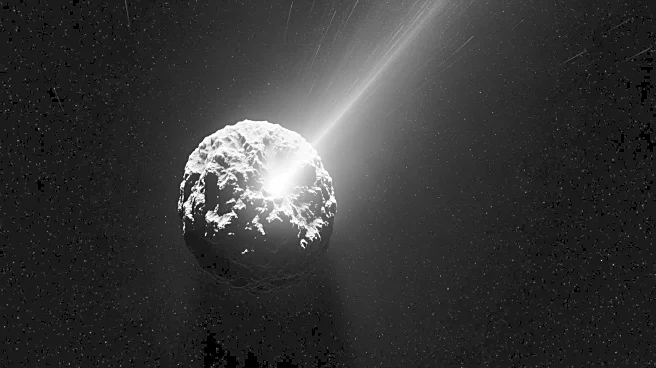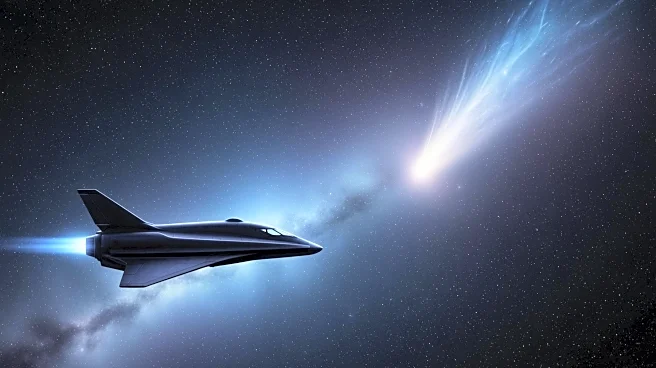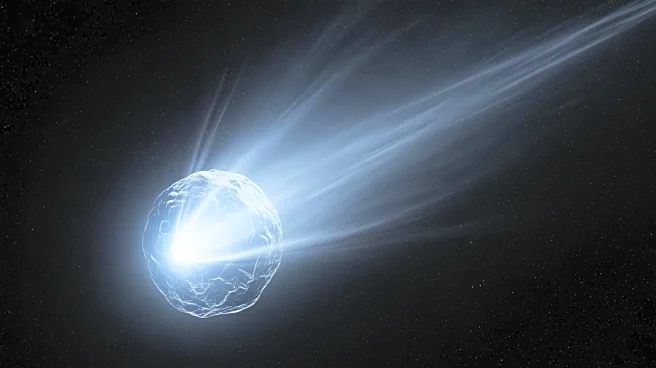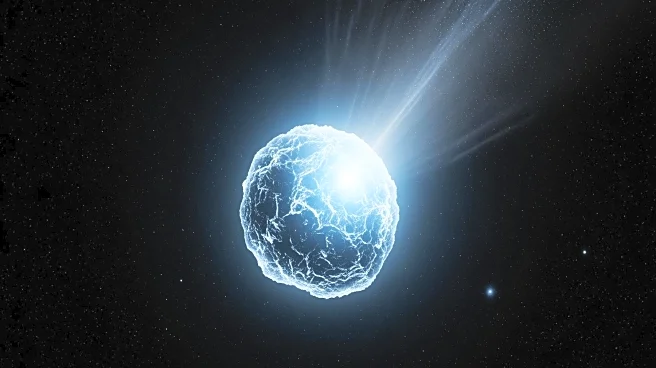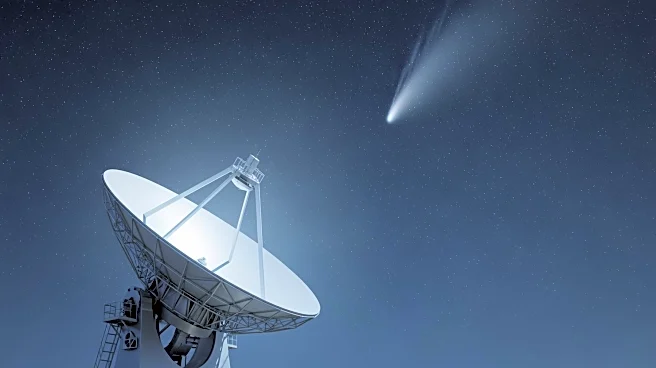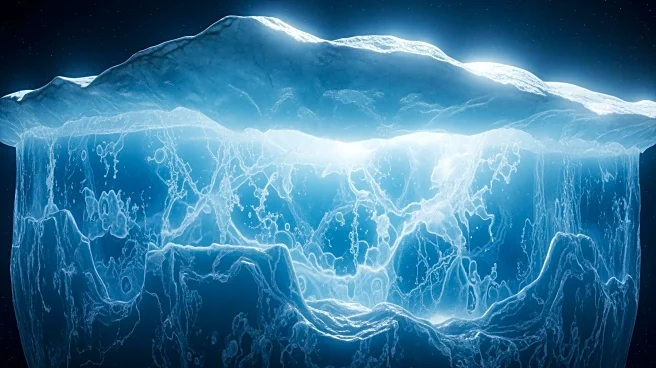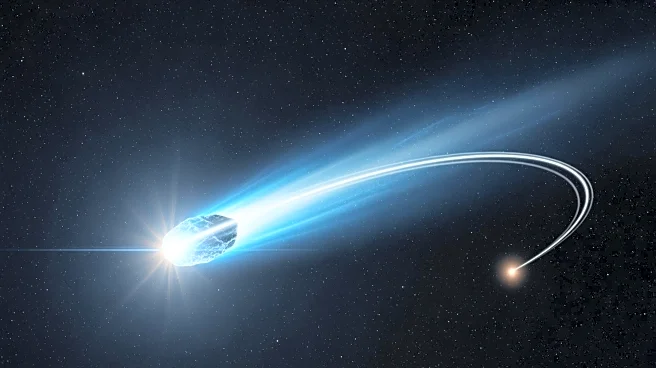What's Happening?
A viral clip has sparked speculation that the interstellar comet 3I/Atlas is sending signals as it approaches Earth. However, scientists have clarified that the comet's activity is a result of routine
physics, not communication. As 3I/Atlas nears the Sun, water ice sublimates, releasing gas that forms hydroxyl radicals detectable at radio wavelengths. This is a passive spectral fingerprint, not an encoded broadcast. NASA and other observatories have confirmed that 3I/Atlas behaves like a natural comet, with no technosignatures indicating artificial origins. The comet will pass safely at a distance of 170 million miles from Earth, and its radio activity is attributed to water chemistry rather than communication.
Why It's Important?
The viral clip highlights the public's fascination with space phenomena and the potential for misinformation. Clarifying the nature of 3I/Atlas is crucial to maintaining scientific integrity and public understanding of space exploration. The comet's behavior provides valuable data for planetary scientists studying interstellar objects, contributing to our knowledge of comet composition and activity. This incident underscores the importance of accurate scientific communication and the need for vigilance against speculative claims that can mislead the public. It also emphasizes the role of observatories and space agencies in providing reliable information.
What's Next?
NASA and other space agencies will continue to monitor 3I/Atlas, compiling images and spectra to study its composition and behavior. As the comet moves through the solar system, scientists will analyze its chemical signatures to gain insights into interstellar comet formation and activity. The public can expect further updates and clarifications from NASA as new data becomes available. This ongoing research will contribute to our understanding of how comets form and evolve, potentially informing future space missions and exploration strategies.
